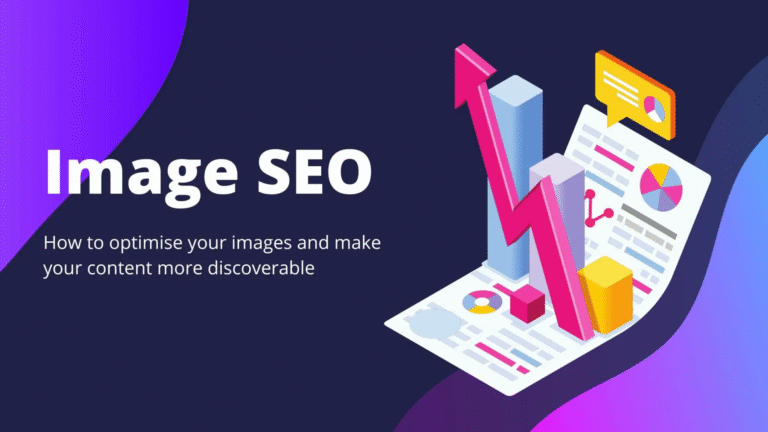Best Practices for eCommerce SEO Pagination: A Comprehensive Guide
Best Practices for eCommerce SEO Pagination: A Comprehensive Guide
The Importance of Pagination in eCommerce SEO
In the world of eCommerce, having a well-structured website is crucial for success. One key aspect of website structure is pagination, which refers to the way content is divided across multiple pages. For large eCommerce sites with extensive product catalogs, effective pagination is essential for both user experience and search engine optimization (SEO). Poor pagination can lead to lost pages, duplicate content issues, and a frustrating user experience, ultimately hindering the site’s visibility and performance in search engine results pages (SERPs).
This comprehensive guide aims to provide eCommerce businesses with a deep understanding of pagination best practices and actionable strategies to optimize their websites for both users and search engines. By implementing these techniques, eCommerce sites can improve their crawlability, indexability, and user engagement, leading to increased organic traffic and conversions.
Understanding Search Engine Crawlers and Pagination
To effectively optimize pagination for SEO, it’s essential to understand how search engine bots crawl and index paginated websites. Search engine crawlers, such as Googlebot, follow links to discover and index content across the web. When a crawler encounters a paginated series, it needs to understand the relationship between the pages to efficiently crawl and index the content.
Common pagination challenges include:
- Lost pages: If pagination is not implemented correctly, search engine bots may fail to discover and index all pages in a series, resulting in “lost” content that doesn’t appear in search results.
- Duplicate content issues: Poorly implemented pagination can lead to duplicate content issues, where similar or identical content appears on multiple pages. This can confuse search engines and dilute the authority of the main content page.
To mitigate these challenges, eCommerce sites should utilize tools like robots.txt and XML sitemaps to guide search engine bots through their paginated content. The robots.txt file can be used to restrict crawler access to certain pages, while XML sitemaps provide a clear outline of the site’s structure and help search engines discover all relevant pages.
Best Practices for On-Page SEO Pagination
Choosing the Right Pagination Structure
One of the most important aspects of SEO-friendly pagination is selecting the appropriate structure for your eCommerce site. In the past, the use of rel=”next” and rel=”prev” link attributes was a popular method for indicating the relationship between paginated pages. However, in 2019, Google announced that it no longer uses these attributes for indexing purposes. Despite this change, implementing rel=”next” and rel=”prev” links can still be beneficial for other search engines and as a way to organize your paginated content.
Alternative pagination methods, such as infinite scroll and “load more” buttons, have gained popularity in recent years. While these methods can provide a seamless user experience, they can also pose SEO challenges. Search engine bots may have difficulty discovering content loaded through these methods, leading to indexing issues. If you choose to use infinite scroll or “load more” buttons, be sure to implement them in a way that allows search engines to easily access and index all content.
Numbered pagination remains a reliable and SEO-friendly option for most eCommerce sites. It provides a clear structure for both users and search engines, making it easy to navigate through the content. When using numbered pagination, be sure to use a clean and descriptive URL structure (e.g., /products?page=2) to help search engines understand the relationship between pages.
Optimizing Individual Pagination Pages
To ensure that each paginated page is optimized for search engines, follow these best practices:
- Use unique and relevant title tags for each page, accurately describing the content within.
- Create compelling meta descriptions that provide a brief overview of the page content and encourage users to click through from search results.
- Implement canonical URLs to indicate the preferred version of a page and avoid duplicate content issues. For paginated content, it’s generally best to use self-referencing canonical URLs (i.e., each page points to itself as the canonical version).
- Ensure consistent internal linking across all paginated pages, making it easy for users and search engines to navigate through the content.
URL Structure and Pagination
A clean and descriptive URL structure is crucial for SEO-friendly pagination. Best practices include:
- Using a clear and concise URL structure that accurately reflects the page content (e.g., /products?page=2).
- Avoiding complex or confusing URL structures that may hinder crawlability and user understanding.
- Keeping URL length in mind, as excessively long URLs can negatively impact SEO performance.
Off-Page SEO Considerations for Pagination
While on-page optimization is essential for pagination SEO, off-page factors like backlinks also play a significant role in boosting the authority of paginated pages. To acquire valuable backlinks, focus on creating high-quality, informative content on your main category pages. As these pages gain backlinks, the authority will flow through to the associated paginated pages, improving their search engine rankings.
User Experience (UX) and Pagination
In addition to SEO, user experience is a critical consideration for eCommerce pagination. A seamless and intuitive UX not only benefits customers but also sends positive signals to search engines. To optimize pagination for UX:
- Design intuitive and user-friendly pagination controls, making it easy for users to navigate through the content.
- Improve page load speed by implementing techniques like lazy loading and minimizing the use of large images and videos.
- Ensure that paginated pages are mobile-friendly and responsive, adapting to various screen sizes and devices.
Technical SEO Aspects of Pagination
Technical SEO plays a vital role in the success of eCommerce pagination. Some key considerations include:
- Using structured data markup (schema.org) to provide search engines with additional context about your paginated content, potentially leading to enhanced search results.
- Regularly monitoring crawl errors and fixing issues related to pagination, such as broken links or 404 errors.
- Utilizing Google Search Console to track the performance of your paginated pages and identify any potential problems.
- Conducting regular audits of your pagination strategy to ensure ongoing optimization and identify areas for improvement.
Advanced Pagination Strategies for eCommerce
For eCommerce sites with large, complex catalogs, advanced pagination strategies may be necessary. These include:
- Implementing faceted navigation, which allows users to filter products based on various attributes. When using faceted navigation, be sure to use canonical tags and noindex tags where appropriate to avoid duplicate content issues.
- Handling large catalogs by implementing techniques like lazy loading and infinite scroll, while ensuring that all content remains accessible to search engine bots.
- Using AJAX pagination to provide a smooth user experience, but be aware of the potential SEO implications. Ensure that AJAX-loaded content is accessible to search engines and consider using a pre-rendering solution for optimal indexing.
Case Studies: Successful eCommerce Pagination Implementations
To illustrate the effectiveness of proper pagination SEO, let’s examine a few real-world examples:
- Amazon: The world’s largest eCommerce site uses a clean, numbered pagination structure with self-referencing canonical URLs. This allows search engines to easily crawl and index their massive product catalog, contributing to their strong organic search presence.
- BestBuy: This electronics retailer implements SEO-friendly pagination with a clear URL structure (/products?page=2), unique title tags, and descriptive meta descriptions for each page. They also use faceted navigation with proper canonicalization to handle their large, complex product catalog.
- Wayfair: This home goods retailer uses a combination of numbered pagination and “load more” functionality to provide a seamless user experience while ensuring that all product pages are accessible to search engines. They also implement structured data markup to enhance their search results.
These case studies demonstrate the success that can be achieved by following pagination best practices and adapting them to the unique needs of your eCommerce site.
A Holistic Approach to eCommerce Pagination SEO
Optimizing pagination for eCommerce SEO requires a holistic approach that considers on-page, off-page, technical, and user experience factors. By implementing the best practices and strategies outlined in this guide, eCommerce businesses can improve the crawlability, indexability, and user engagement of their paginated content, leading to long-term organic search success.
Key takeaways include:
- Choose an appropriate pagination structure based on your site’s unique needs and goals.
- Optimize individual pagination pages with unique titles, compelling meta descriptions, and self-referencing canonical URLs.
- Use a clean, descriptive URL structure for paginated pages.
- Focus on acquiring backlinks to main category pages to boost the authority of associated paginated pages.
- Prioritize user experience by designing intuitive pagination controls, improving page load speed, and ensuring mobile-friendliness.
- Implement technical SEO best practices, such as structured data markup and regular monitoring of crawl errors.
- Adapt advanced pagination strategies, like faceted navigation and AJAX pagination, to handle large, complex catalogs.
By putting these strategies into practice, eCommerce businesses can create a pagination system that not only satisfies search engines but also provides a seamless, engaging experience for their customers.
Resources and Further Reading
To further expand your knowledge of eCommerce pagination SEO, explore these helpful resources:
- Google Search Central Documentation on Pagination:
- Case Studies and Research:
- The State of Pagination in eCommerce by Lumar
- SEO Pagination Case Study by SEO Depths
- Additional Guides and Tutorials:
By staying up-to-date with the latest best practices and insights from industry experts, eCommerce businesses can continuously refine their pagination strategies and stay ahead of the competition in organic search.





